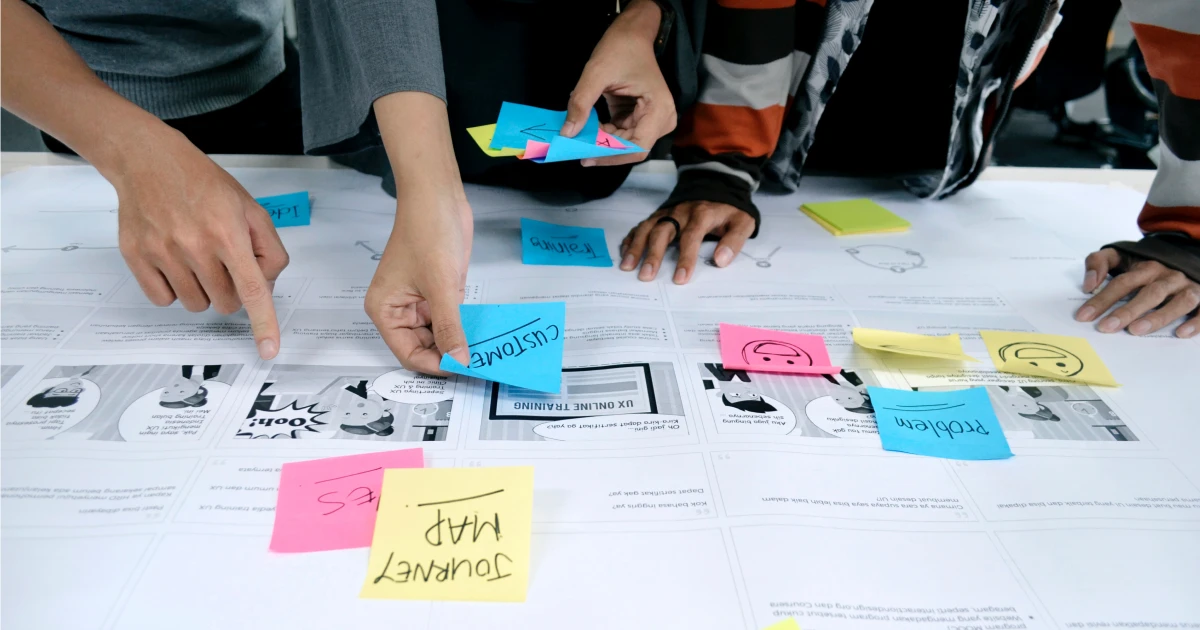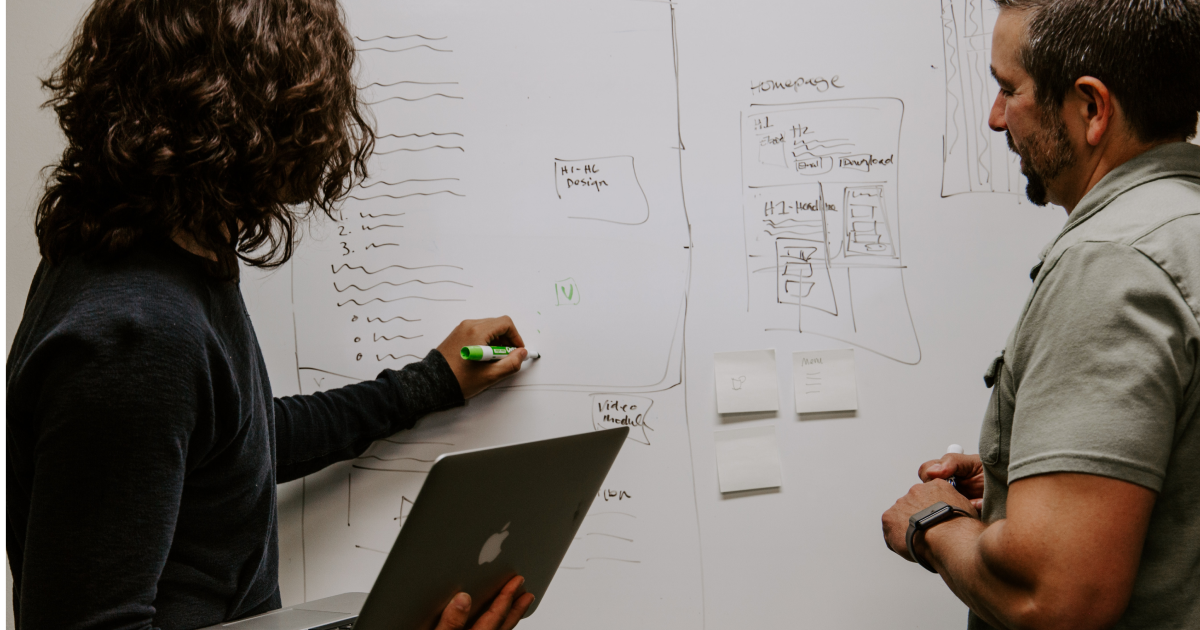
UX research: What, how & why
Aug 25
9 min read
UX research is a powerful tool that empowers companies to align their products with user needs and expectations, resulting in enhanced user satisfaction and improved business outcomes.
This impactful process plays a significant role throughout the entire product development lifecycle, from understanding user needs to refining designs and incorporating user feedback.
By seamlessly integrating UX research into every stage of the development process, businesses can create products that are truly user-centric, intuitive, and successful in meeting user expectations.
In this comprehensive article, we will delve into the world of UX research, exploring its importance in product development and design. We will discuss key objectives and explore various research methods used to gain invaluable insights into user behaviors, preferences, and pain points.
We will also provide a step-by-step guide on conducting effective UX research, enabling businesses to create user-friendly and successful products that resonate with target audiences and foster long-term customer loyalty.
What is UX research?
UX research, short for user experience research, is a fundamental aspect of the product development and design process. Its main objective is to gain deep insights into how users interact with a product or service to ensure it meets needs and expectations effectively.
During the UX research process, researchers employ various methods to understand user behaviors, preferences, and pain points. They may conduct interviews or surveys, or observe users as they interact with the product. This data-driven approach helps identify potential issues, areas of improvement, and opportunities for innovation.
By analyzing and interpreting the gathered data, product designers and developers (like the agency team at Twenty Ideas), can make informed decisions about how to enhance the user experience. They may modify the layout, functionality, or design elements to create a more intuitive and enjoyable user journey.
The ultimate goal of UX research is to create products and services that users find easy to use, efficient, and satisfying. A positive user experience not only boosts customer satisfaction and loyalty, but also increases the likelihood of successful product adoption and business growth.
How to conduct UX research
Conducting UX research is crucial to understanding user needs and creating better products or services. By following this step-by-step guide, you can conduct thorough UX research that leads to a better understanding of your users and the creation of user-friendly and successful products or services.
1. Define research objectives
Begin by clearly defining the objectives of your UX research. Determine the specific insights you want to gather and the questions you need to answer about your product or service.
For example, if you are developing a language assessment app, your research objective might be to understand how users navigate through the assessments and identify pain points in their user journey.
2. Identify your target users
Pinpointing and understanding your user demographics and characteristics is crucial for recruiting the right participants who can provide relevant feedback.
For instance, using the language assessment app example, your target users might be recruiters who are looking to hire customer service representatives and want to test the candidates’ language proficiency.
3. Choose your research methods
Select appropriate research methods based on your objectives and target users. Common UX research methods include:
Interviews
One-on-one UX interviews gather in-depth insights from users. For example, you can interview users and ask questions about their preferences and pain points.
Surveys
Surveys are a great way to collect quantitative data from a larger user group. For instance, you can create a Google Form and ask users to rate their satisfaction with the user interface of your software through an online survey.
Observations
User observation software, like Hotjar, can help determine how users interact with the platform to better understand their behaviors.
Usability testing
Usability tests are a great way to evaluate how easily users can accomplish tasks.
In the context of an e-learning app, you can ask users to attend a lesson or complete an assessment to observe any difficulties they may encounter.
4. Prepare research materials
Create interview scripts, survey questionnaires, observation guidelines, or usability test scenarios. Ensure your research materials are clear, unbiased, and align with your research objectives.
5. Recruit participants
Recruit participants who fit your target user profile. You can reach out to your existing user base, use online platforms, or work with recruitment agencies to find suitable participants.
For example, if you were developing an event management app, then you might want to recruit participants who plan or manage events for a living.

6. Conduct the research
Conduct interviews, surveys, observations, or usability tests based on your chosen research methods. Be attentive, open-minded, and allow participants to express their thoughts freely.
7. Analyze data
After data collection, analyze the findings to identify patterns, trends, and key insights. Look for common pain points, positive experiences, and user preferences.
For example, when analyzing data, review survey responses to identify the most and least satisfying to use features.
8. Interpret results
Consider the data in the context of your research objectives and user needs with the goal of drawing meaningful conclusions that will inform your design decisions.
For example, examine usability testing results to determine if the app's layout hinders or aids task completion.
9. Create recommendations
Based on your analysis, generate actionable recommendations to improve your product or service. Prioritize the changes based on their impact and feasibility.
For example, if you were developing an online educational platform, based on your user feedback, you could create recommendations to simplify the student registration process.
10. Implement changes
Use the insights and recommendations from your UX research to make necessary changes to your product or service. Iterate and test your improvements to ensure they address user needs effectively.
11. Monitor & iterate
Monitor the impact of the changes and gather feedback from users to refine and enhance the user experience over time. UX research is an iterative process that requires ongoing attention to user needs and feedback. Keep an eye on user behavior and preferences to make data-driven updates.
The benefits of UX research
User experience (UX) research provides valuable insights into how users interact with a product or service.
Understanding user needs, preferences, and pain points is essential for creating user-friendly and successful products. By conducting UX research, businesses can align their offerings with user expectations, enhance customer satisfaction, and gain a competitive advantage in the market. Investing in UX research early in the development cycle can also lead to cost savings by identifying and addressing potential issues before they become more challenging to fix.
By understanding user behaviors and preferences, organizations can create products and services that meet user needs, boost customer satisfaction, and gain a competitive advantage in the market.
Some of the long-term benefits of conducting UX research include:
Enhanced user satisfaction
UX research helps businesses create products and services that cater to user needs, leading to improved customer satisfaction. When users have a positive experience with a product, they are more likely to become loyal customers and recommend it to others.

Increased user engagement
Understanding user behaviors and preferences allows businesses to design products that encourage higher user engagement. Engaged users are more likely to spend more time interacting with the product, leading to increased usage and potential revenue growth.
Improved usability
UX research surfaces usability issues and pain points in a product's design, enabling businesses to make necessary improvements. A user-friendly interface boosts efficiency, reduces user frustration, and encourages repeat usage.
Reduced development costs
Identifying and addressing usability issues early in the development process helps prevent costly redesigns later. By investing in UX research, businesses can save time and resources by building products that meet user needs from the start.
Better decision making
Data-driven insights from UX research guide informed decision-making throughout the product development lifecycle. Designers and developers can prioritize features, refine designs, and make evidence-based decisions that resonate with users.
Competitive advantage
Delivering a superior user experience can set a product apart from competitors in a crowded market. Businesses that invest in UX research gain a competitive edge by offering products that users find intuitive and enjoyable to use.
Increased customer loyalty
Positive user experiences foster customer loyalty and brand advocacy. Satisfied customers are more likely to remain loyal to a brand and become promoters, leading to increased customer retention and organic growth through word-of-mouth marketing.
Enhanced conversion rates
A seamless user experience can positively impact conversion rates, leading to more successful sales, sign-ups, or desired user actions.
The impact of UX research on the product development lifecycle
User Experience (UX) research plays a crucial role in shaping the product development lifecycle, ensuring that products meet user needs and expectations effectively. By gathering valuable insights from users, UX research influences decision-making, design, and development stages, ultimately leading to the creation of successful and user-friendly products.
Here's a closer look at how UX research impacts the different stages of the product development lifecycle:
Understanding user needs
At the outset of the product development process, UX research helps identify and understand user needs, pain points, and preferences. Through methods like user interviews, surveys, and usability testing, designers gain valuable insights into what users expect from the product. This understanding serves as the foundation for the entire development process.
Ideation & conceptualization
Armed with user insights, the ideation and conceptualization stage can be more targeted and effective. UX researchers and designers can brainstorm ideas that directly address user needs, ensuring that the product concept resonates with the target audience.
Prototyping and design
During the prototyping and design phase, UX research continues to play a pivotal role. By testing early prototypes with users, researchers can gather feedback and identify design flaws or areas for improvement. This iterative process helps refine the product's design and user interface, ensuring that it aligns with user expectations.
Development & implementation
As the product moves into development, UX research provides developers with data-driven guidance on user interactions and preferences. It helps prioritize features, functionalities, and performance improvements that directly impact the user experience.
Usability testing
UX research often involves conducting usability tests throughout the development process. By observing how users interact with the product, researchers can identify usability issues and make necessary adjustments before the product is launched.
Launch & post-launch evaluation
Even after the product is launched, UX research remains critical. Monitoring user feedback, behavior, and metrics helps identify areas for further improvement and potential updates to enhance the user experience continually.

Customer feedback & updates
Gathering ongoing feedback from users after launch enables continuous improvement. UX research informs updates and feature additions based on user needs and preferences, ensuring the product remains relevant and competitive in the market.
Competitive analysis
UX research includes analyzing competitor products to understand their strengths and weaknesses. This analysis informs the product's positioning and unique selling points, allowing businesses to differentiate their offering based on superior user experience.
Final thoughts
UX research is a vital and powerful tool that empowers companies to create user-friendly, successful products that align with user needs and expectations. By conducting thorough research, businesses can enhance customer satisfaction, increase user engagement, and gain a competitive edge in the market.
Integrating UX research throughout the product development lifecycle ensures that products are designed with the user in mind, leading to better decision-making, reduced development costs, and improved customer loyalty.
As technology and user preferences continue to evolve, investing in UX research remains crucial to future-proofing products and delivering exceptional user experiences. By embracing UX research as an integral part of the development process, businesses can create products that stand the test of time and meet the changing demands of their target audience, ultimately achieving long-term success in the dynamic and competitive landscape of the market.
Are you ready to enhance your user experience and develop exceptional products? Contact Twenty Ideas, to discover how our UX research expertise can help build successful software solutions.
Jana DiSanti
Jana DiSanti leads content strategy for Twenty Ideas. She brings nearly a decade of digital marketing, content creation, user research, and project management expertise to the table to advance the goals of the 20i agency and its clients. She specializes in promoting brands and products focused on improving the health of people, communities, and the planet.
by this author




